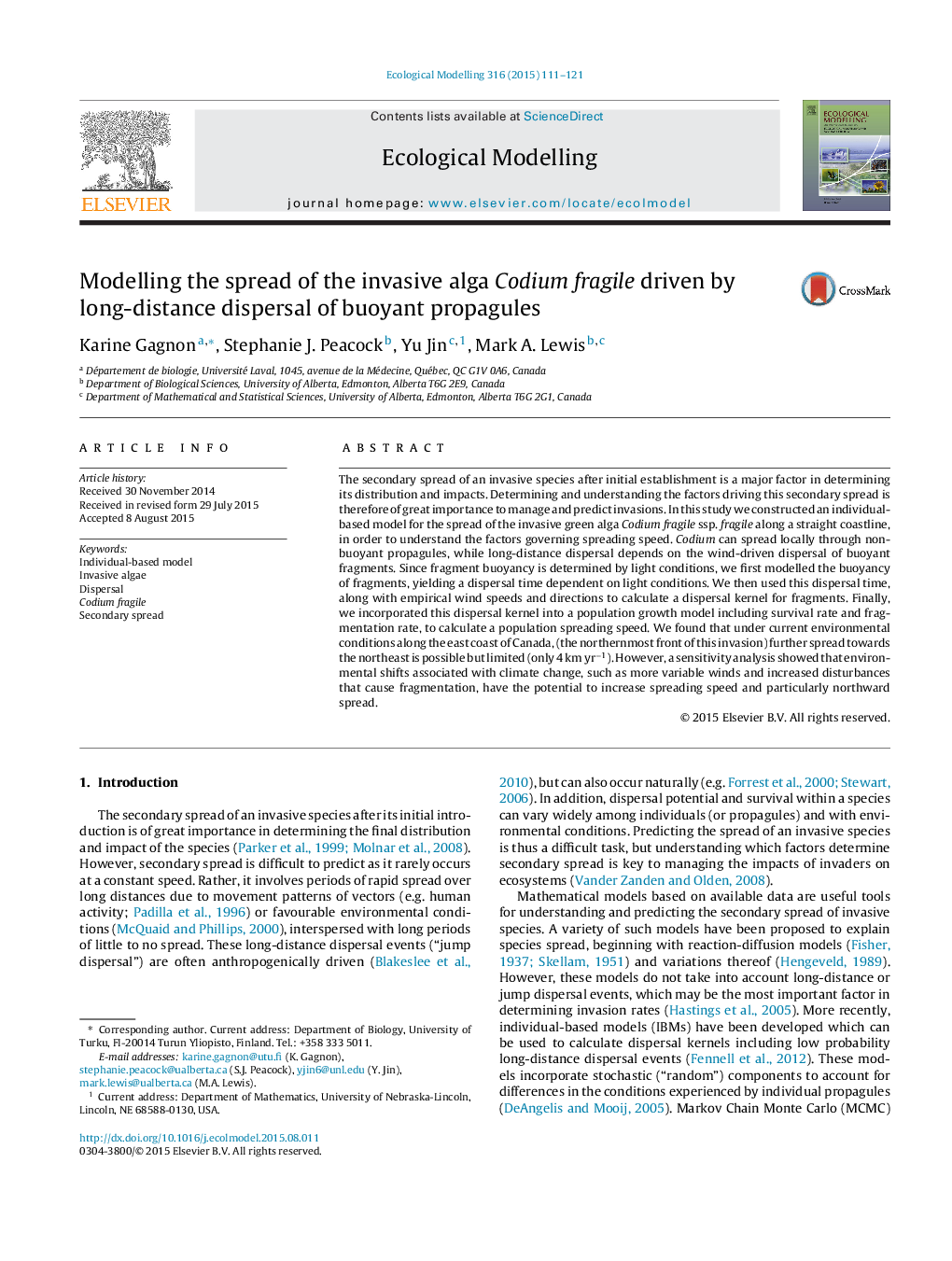| Article ID | Journal | Published Year | Pages | File Type |
|---|---|---|---|---|
| 6296462 | Ecological Modelling | 2015 | 11 Pages |
Abstract
The secondary spread of an invasive species after initial establishment is a major factor in determining its distribution and impacts. Determining and understanding the factors driving this secondary spread is therefore of great importance to manage and predict invasions. In this study we constructed an individual-based model for the spread of the invasive green alga Codium fragile ssp. fragile along a straight coastline, in order to understand the factors governing spreading speed. Codium can spread locally through non-buoyant propagules, while long-distance dispersal depends on the wind-driven dispersal of buoyant fragments. Since fragment buoyancy is determined by light conditions, we first modelled the buoyancy of fragments, yielding a dispersal time dependent on light conditions. We then used this dispersal time, along with empirical wind speeds and directions to calculate a dispersal kernel for fragments. Finally, we incorporated this dispersal kernel into a population growth model including survival rate and fragmentation rate, to calculate a population spreading speed. We found that under current environmental conditions along the east coast of Canada, (the northernmost front of this invasion) further spread towards the northeast is possible but limited (only 4 km yrâ1). However, a sensitivity analysis showed that environmental shifts associated with climate change, such as more variable winds and increased disturbances that cause fragmentation, have the potential to increase spreading speed and particularly northward spread.
Related Topics
Life Sciences
Agricultural and Biological Sciences
Ecology, Evolution, Behavior and Systematics
Authors
Karine Gagnon, Stephanie J. Peacock, Yu Jin, Mark A. Lewis,
